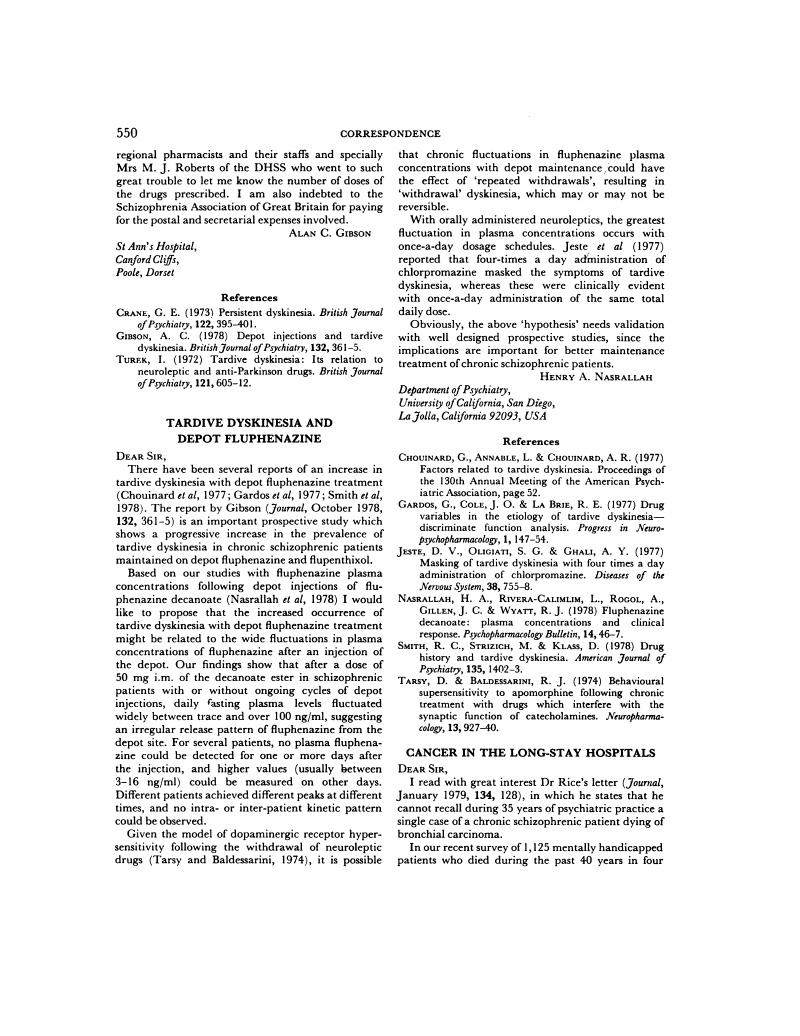No CrossRef data available.
Article contents
Tardive Dyskinesia and Depot Fluphenazine
Published online by Cambridge University Press: 29 January 2018
Abstract
An abstract is not available for this content so a preview has been provided. As you have access to this content, a full PDF is available via the ‘Save PDF’ action button.

- Type
- Correspondence
- Information
- Copyright
- Copyright © Royal College of Psychiatrists, 1979
References
Chouinard, G., Annable, L. & Chouinard, A. R. (1977) Factors related to tardive dyskinesia. Proceedings of the 130th Annual Meeting of the American Psychiatric Association, page 52.Google Scholar
Gardos, G., Cole, J. O. & La Brie, R. E. (1977) Drug variables in the etiology of tardive dyskinesia—discriminate function analysis. Progress in Neuro-psychopharmacology, 1, 147–54.Google Scholar
Jeste, D. V., Oligiati, S. G. & Ghali, A. Y. (1977) Masking of tardive dyskinesia with four times a day administration of chlorpromazine. Diseases of the Nervous System, 38, 755–8.Google Scholar
Nasrallah, H. A., Rivera-Calimlim, L., Rogol, A., Gillen, J. C. & Wyatt, R. J. (1978) Fluphenazine decanoate: plasma concentrations and clinical response. Psychopharmacology Bulletin, 14, 46–7.Google Scholar
Smith, R. C., Strizich, M. & Klass, D. (1978) Drug history and tardive dyskinesia. American Journal of Psychiatry, 135, 1402–3.Google ScholarPubMed
Tarsy, D. & Baldessarini, R. J. (1974) Behavioural supersensitivity to apomorphine following chronic treatment with drugs which interfere with the synaptic function of catecholamines. Neuropharmacology, 13, 927–40.Google Scholar



eLetters
No eLetters have been published for this article.